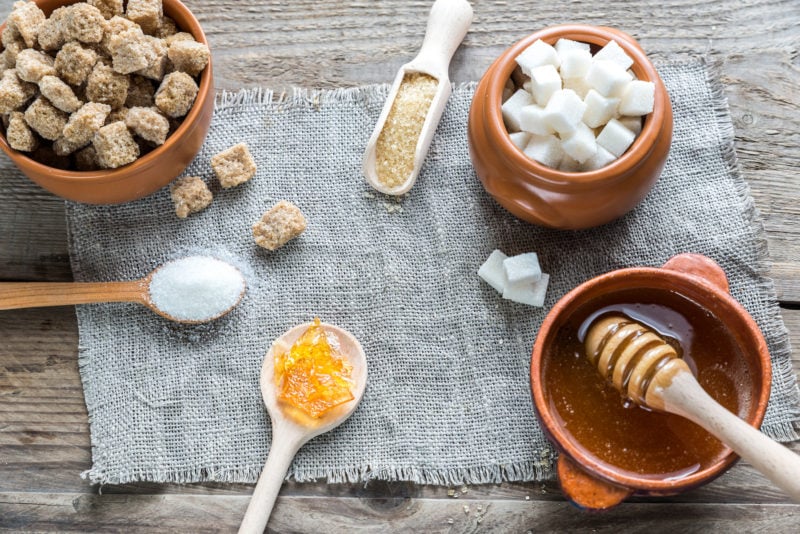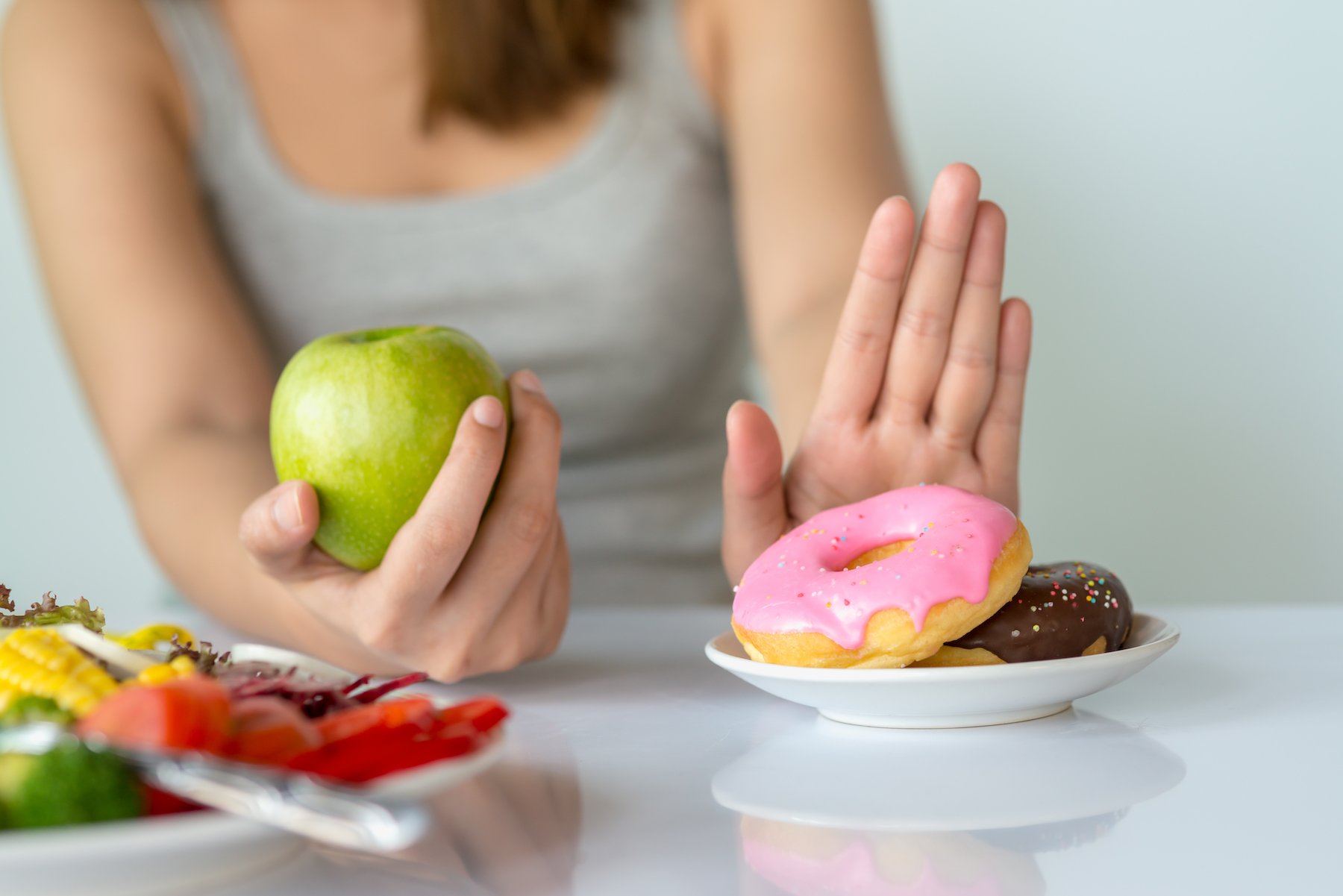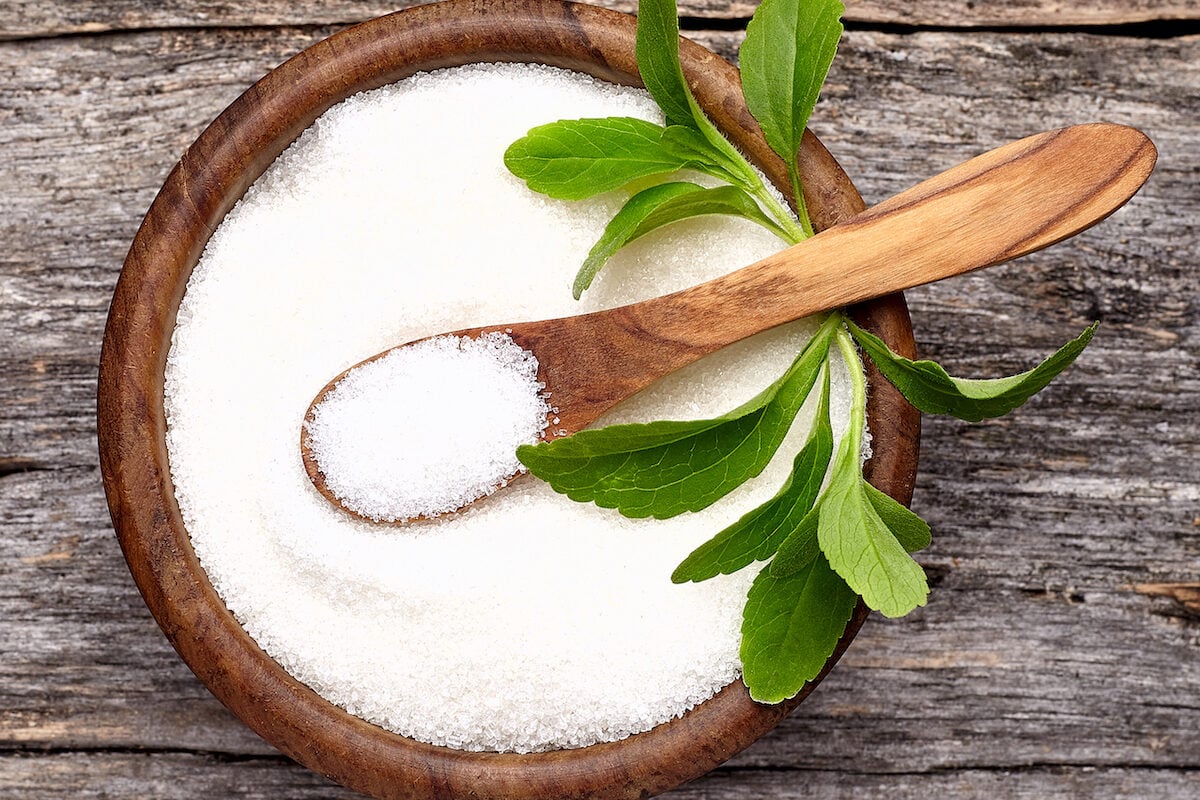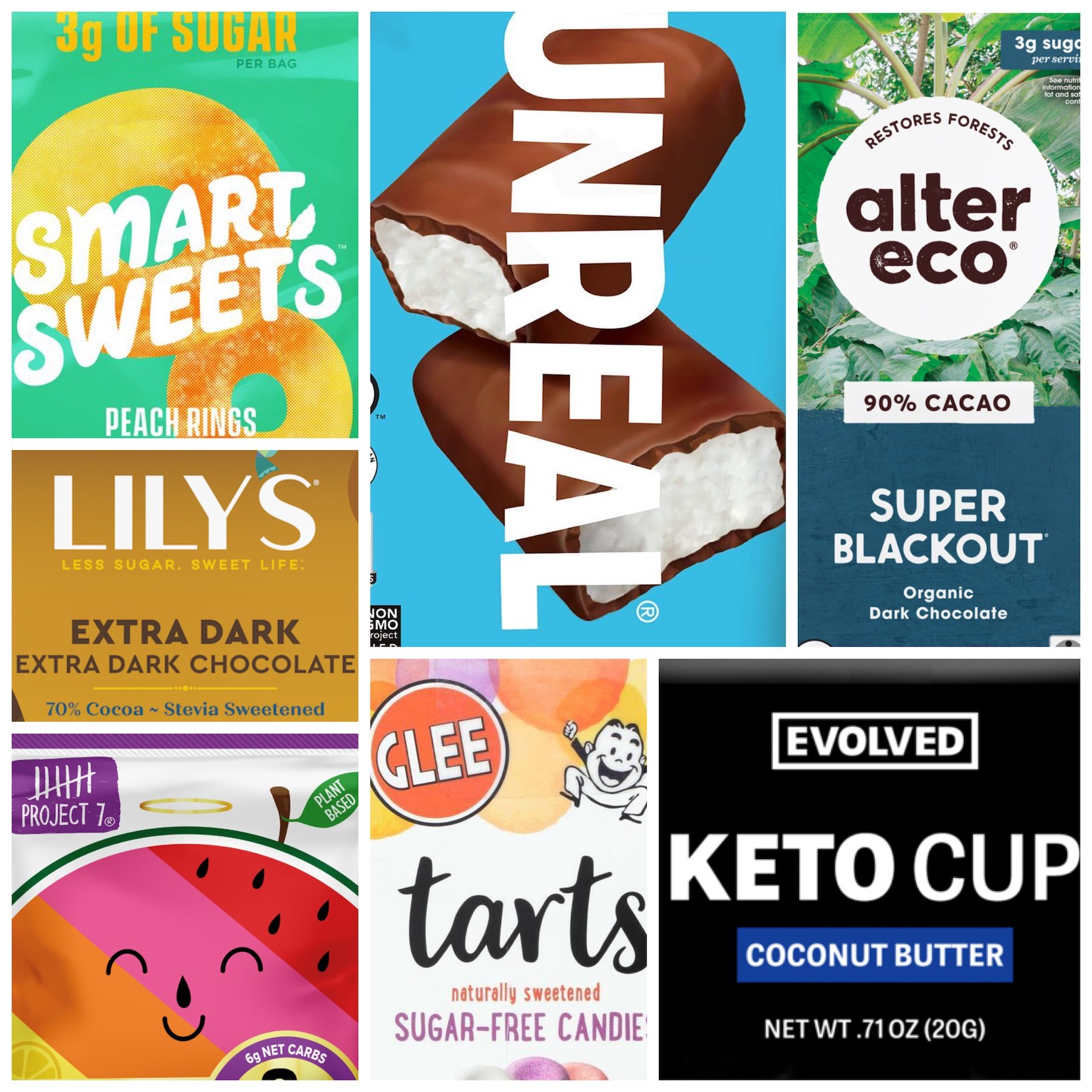Many foods in your local healthy supermarket tout alternatives to regular old sugar, implying a more nutritious choice: brown sugar, cane sugar, honey, brown rice syrup. The marketing suggests that a product labeled organic or all-natural is not as damaging as sugar.
But the truth is, it’s not. “Natural” or organic sugars like honey, agave nectar, or beet sugar are still sugar and are just as likely to lead to blood glucose spikes or other damaging metabolic health effects as plain old table sugar.
Why It’s Best to Limit Sugar Intake
Sugar is a carbohydrate, a macronutrient found in nearly all foods that our body converts to glucose and uses to give our cells energy. Along with protein and fat, carbs are fuel for our body.
The problem is that 90% of Americans eat more than the recommended amount of sugar daily. Getting small amounts of sugar from whole foods––like eating an apple a day, for example––enables your body to process sugar, break it down into glucose, and use it for energy. Plus, apples have fiber, which helps slow digestion and keeps you feeling full for longer.
However, drinking a glass of apple juice has the opposite effect. Taking in a massive load of glucose at once, without the fiber, causes the amount of sugar in your blood to rise rapidly. This leads to a flood of insulin (the hormone that helps shuttle glucose out of your blood and into your cells) as your body tries to get back to homeostasis. That rush of insulin often leads to a blood sugar crash as your body overcorrects. This crash can cause more cravings, causing you to eat more sugar and leading to another spike and crash.
This kind of high glycemic variability is at the root of several health issues. Prediabetes (insulin resistance), obesity, cardiovascular disease, diabetes, and high blood pressure are just a few of the adverse outcomes of a high-sugar diet. In addition to those long-term impacts, a blood sugar spike and crash can lead to short-term effects like brain fog and fatigue.
Unfortunately, highly processed foods full of added sugar are prevalent in Western diets and sometimes masquerade as health foods, like energy bars or drinks. One study found that ultra-processed foods make up nearly 90% of added sugars consumed in the United States.
Added Sugar vs. Naturally Occurring Sugars: What’s the Difference?
Table sugar, aka sucrose, is nearly equal amounts of glucose and fructose. Glucose is the body’s primary energy source that comes from foods we eat, primarily carbohydrates. Fructose is a natural simple sugar found in fruits and vegetables. It’s also commonly added to processed foods and used to make products like high-fructose corn syrup.
Consuming too much of either can have health consequences. Too much glucose leads to blood sugar spikes. Too much fructose will not cause the same rise in blood sugar but can still lead to insulin resistance and non-alcoholic fatty liver disease over time. That’s because the liver metabolizes fructose, and in the presence of excess fructose, the liver can start turning the sugar into fat—a process known as de novo lipogenesis (DNL).
Most naturally occurring sugars contain some combination of fructose and sucrose, but there are several other sugar types as well, including lactose (present in dairy) and maltose. Some, like fructose and glucose, are monosaccharides, meaning single-molecule carbohydrates; others are disaccharides, meaning they are a combination of two sugars. For example, lactose combines the monosaccharides glucose and galactose. High fructose corn syrup is an example of a manufactured sweetener but is still a combination of fructose and glucose.
No matter what form or package the sugar comes in, your body still breaks it down into these basic compounds. Whether the sugar in the food you eat is naturally occurring or added doesn’t matter for your metabolic health. Instead, the total amount you consume and how quickly and easily your body absorbs it has the most impact. Excess dietary sugars lead to health problems like obesity and Type 2 diabetes. With that in mind, here are eight common “natural” sugars to avoid.
1. Cane sugar
Where it’s from: One of the oldest sources of sugar is sugarcane, a type of tropical grass native to South Asia. The sweet juice that comes from sugarcane was first documented more than 2,500 years ago in India. There are many types of sugar made from sugarcane, including processed white sugar, brown sugar, and molasses.
Sugar composition: Sugarcane is mostly sucrose. Since sucrose comprises one fructose and one glucose molecule, raw sugarcane juice has an even glucose to fructose ratio. White cane sugar is roughly 99% sucrose, and brown cane sugars are between 88–93% sucrose.
Takeaway: No matter its form, excess cane sugar will lead to a rapid rise in glucose. Even products labeled as natural or unrefined still go through an extraction, crystallization, and packaging process, putting them on par with regular table sugar.
2. Brown sugar
Where it’s from: Brown sugar combines white sugar, made from sugarcane, with molasses to give it a unique taste and color. But like white sugar, it still goes through an extensive extraction and packaging process that strips away nutrients, leaving a product that’s mostly empty calories.
Sugar composition: Brown sugar contains between 88–93% sucrose.
Takeaway: Like cane sugar, corn syrup, and honey, brown sugar is often added to already processed foods and is no healthier than other sugars.
3. Agave nectar
Where it’s from: Agave nectar is a syrup from the agave plant, a type of succulent indigenous to Mexico. Any commercial agave products made in Mexico prohibit the use of food additives like sugar. And it’s a good thing––because of its high fructose content, agave nectar tastes sweeter than syrups with a similar sugar makeup.
Sugar composition: Agave nectar is more than 60% fructose. The remainder is composed of glucose and trace amounts of sucrose.
Takeaway: Agave syrup is high in carbs but has a low glycemic index. This might sound like a good thing as a low GI means the body takes longer to process the sugar. But the problem is the high fructose content of agave syrup. Since the liver is the only organ able to process this simple sugar, it can easily get overloaded, leading to long-term problems like fatty liver disease and insulin resistance.
4. Coconut sugar
Where it’s from: Coconut sugar is made by evaporating sap from coconut palm trees. Like other sugars obtained from natural sources, coconut sugar loses nutritional value depending on how it’s processed.
Sugar composition: Coconut sugar is roughly 70–79% sucrose and between 3–9% glucose and fructose.
Relevant research: Coconut sap (from which coconut sugar is made) is rich in minerals, vitamins, and antioxidants and offers a lower glycemic index than cane sugar, but refined coconut sugar—the form typically used as an additive—is no better for you than cane sugar.
5. Honey
Where it’s from: Honey is another ancient natural sugar that dates back some 8,000 years. There are even Stone Age paintings depicting the use of this sweet, golden liquid. Honey starts as flower nectar, which bees collect and take back to their hive. The nectar is broken down and goes through a dehydration process in the honeycomb, resulting in the thick, concentrated substance known as honey. When stored properly, it never goes bad. Researchers have found 2,000-year-old sealed jars of honey buried by Egyptians that are still perfectly preserved.
Sugar composition: Unprocessed honey contains roughly 200 substances, although the majority is made up of sugar and water. Honey contains around 35% fructose and 30% glucose.
Takeaway: Unlike many sugars, honey has some health benefits due to its antioxidant and antibacterial properties. It’s been used as food and in traditional medicine for thousands of years. Unfortunately, its high carb content will still lead to a rapid blood sugar rise, so it’s not a healthier swap for table sugar. There are better ways to get antioxidants and micronutrients, such as whole fruits and vegetables.
6. Maple syrup
Where it’s from: Maple syrup is made by collecting and boiling sap from sugar maple trees. Quebec generates an estimated 80% of the world’s maple syrup supply.
Sugar composition: Maple syrup is between 60-66% sucrose. The rest of its sugar composition is split between glucose, fructose, and other complex carbs.
Takeaway: Like honey, completely raw, unrefined maple syrup contains a handful of vitamins and minerals, including calcium, iron, magnesium, riboflavin, and thiamine. But if you’re at the local store and pick up a bottle of generic maple syrup, it’s likely to have lost all its nutrients during production. And like all the other sugars on this list, consuming it will still lead to blood sugar spikes.
7. Brown rice syrup
Where it’s from: Brown rice syrup is made by fermenting or breaking down brown rice. This process turns the starch in rice into a sugary syrup. Like other syrups, this one is very high in sugar, providing a lot of calories but few nutrients.
Sugar composition: Brown rice syrup is almost entirely glucose.
Takeaway: Organic brown rice syrup gets marketed as a “healthier” alternative to high-fructose corn syrup. It’s popular in gluten-free products and as added sugar in rice-based items like energy bars and baby milk formula. However, like the other sugars on this list, it will still lead to a rapid rise in blood sugar. Some research also shows organic brown rice syrup contains arsenic. One test on milk formula (with brown rice syrup as the main ingredient) showed arsenic levels six times higher than the safe drinking water limit.
8. Beet sugar
Where it comes from: As the name indicates, beet sugar comes from the naturally sweet liquid of the sugar beet. The juice is extracted from the beet, purified, and crystallized into granulated sugar.
Sugar composition: Like sugarcane, beet sugar is high in sucrose.
Relevant research: Whole beets are a nutritious vegetable, and researchers have found beetroot juice supplementation holds promise in controlling Type 2 diabetes, improving kidney health, and lowering blood pressure. Beet sugar, on the other hand, has none of those benefits. Like cane sugar, it’s often added to processed foods and converted into high fructose syrups.
Alternatives to Natural Sugar
Yes, our body needs glucose for energy. But that doesn’t mean you need to seek sugar in your food. Not only can your body make glucose if it needs more (a process called gluconeogenesis), but you can also train your body to burn fat over glucose, known as metabolic flexibility. Finally, nearly all foods contain some carbohydrates, so eating a balanced diet of natural, whole foods will give your body all the glucose it needs.
If you’re baking or want to sweeten up your coffee, natural sugar substitutes like Stevia and monk fruit are good alternatives to sugar and artificial sweeteners. You can also add bits of fruit like dates into recipes if you crave a sweeter taste. The fiber in the fruit helps slow digestion and blunt blood sugar spikes. (That said, go easy—dates are very, very sweet!)
Don’t be too hard on yourself for having sugar cravings; sugar activates reward pathways in the brain that make it hard to resist. That said, there are ways to curb them. Studies show that just cutting back the amount of carbs you eat can reduce cravings, sometimes within weeks.








